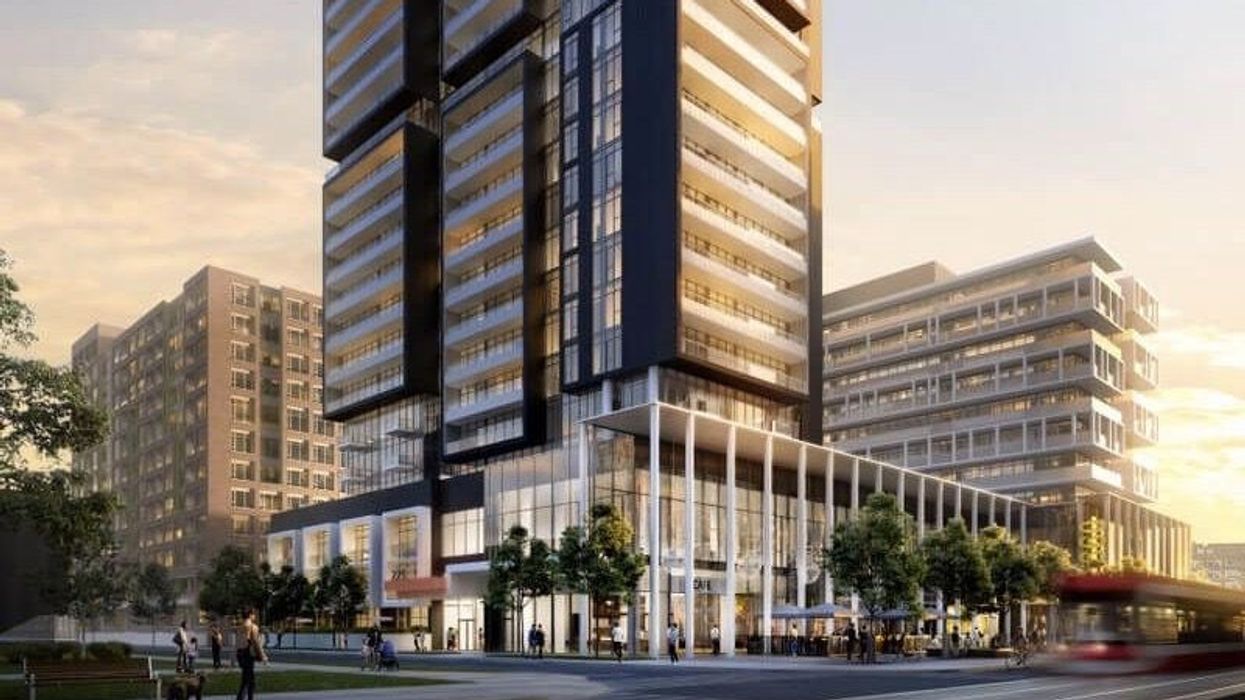Twenty-four per cent of Ontario’s population (3.44 million people) have some sort of disability, whether that be physical, cognitive, sensory, or episodic. Over 400,000 of those people reside in Toronto.
As the population ages, those numbers will only increase. In 2017, there were more Ontarians over the age of 65 than under the age of 14 and people continue to reach retirement age at a rate of 1,000 people per day. That number will really increase by 2030, when those 65 and over will account for 21.9% of Ontario’s population.
This is important because, according to 2017’s Canadian Survey on Disability, the occurrence of disability naturally increases with age. Only 13% of those 15 to 24 have disabilities, while 47% of those over the age of 75 are affected. These statistics mean that for many Canadians, it’s not a question of if they’ll ever get disability, but rather a question of when they will get one.
And yet, even with that looming reality, Toronto (and Ontario in general) possesses a woeful lack of accessible housing stock.
Eyeballing Accessibility
No one knows this better than Jeffrey Kerr. The RE/MAX Unique Inc. real estate broker, and author of Barrier Free Real Estate – Achieving Freedom at Home, still struggles to find his clients accessible housing in Toronto and the GTA despite specializing in just that since 2004.
“It is a struggle to find suitable accommodation for a lot of my clients. There’s very limited criteria when properties get listed and posted on the Toronto Regional Real Estate Board [TRREB] that I can search,” said Kerr.
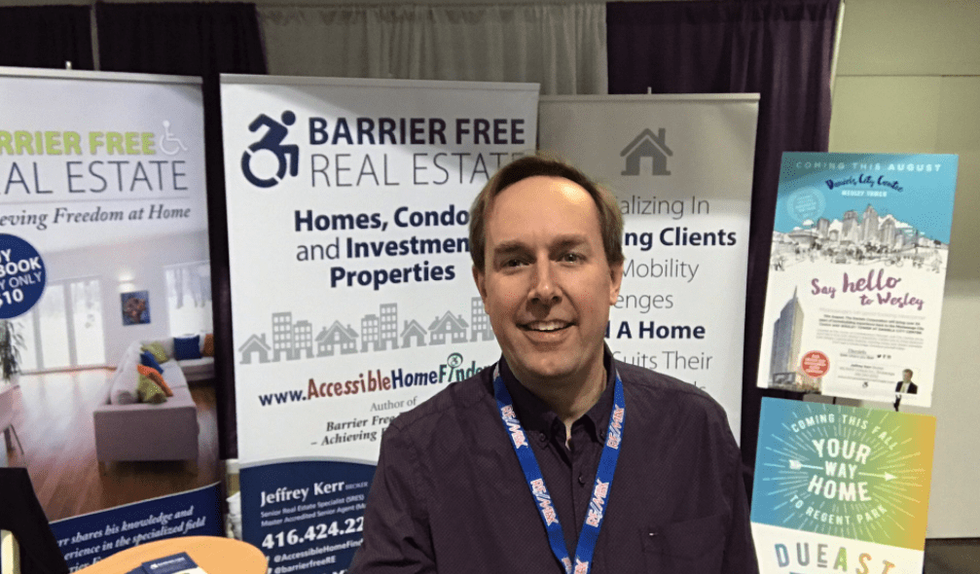
He explained TRREB’s listing database has very few boxes that you can tick if you’re listing is accessible beyond, “Is it accessible?” and “Does it have an elevator?” Instead, most realtors must rely on the text portion of the listing to describe accessibility features and most do so improperly.
“When I search ‘accessibility’ and I dive into the listing, it’ll say, “accessible to a bus stop” or “accessible to a grocery store,” so I think they’re using the terminology incorrectly,” said Kerr.
This, despite other real estate boards in Ontario having a lot more detailed search criteria that realtors can add to their listing, like minimum door widths, a 60-inch turning radius and whether the property has grab bars, an exterior lift, a roll-under sink, a roll-in shower, and other accessibility features.
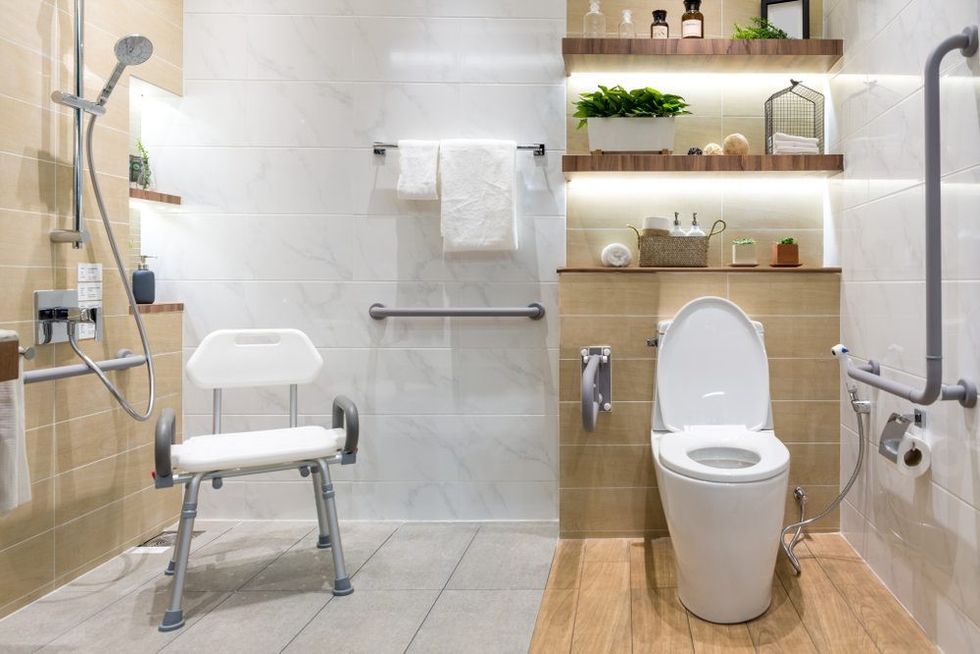
For its part, TRREB’s announced a full redesign of the MLS® System database, which presents opportunities for change.
“TRREB has a mandatory ‘Special Designation’ field with an ‘accessibility’ option on the MLS® System. In addition, we also have a ‘Physically handicapped: YES/NO’ field. Additional information on accessibility features can be included in the client and broker remarks fields. Furthermore, we recently announced that a new MLS® back-end is under development as part of a full redesign of our MLS® System database that could present new opportunities in this area,” said John DiMichele, TRREB CEO, in an emailed statement.
READ: Ask An Agent: Tips For Finding Accessible Housing In The GTA
For now, Kerr uses his 17 years of experience unearthing accessible homes to eyeball the photos in a listing looking at things like the front elevation of a home to see if a barrier-free entrance would be possible, as well as whether the bathroom would be big enough for a wheelchair, and if it’s not, is there an adjoining space that can be incorporated with the bathroom to make it accessible?
“An entryway solution and a bathroom solution are the two main things my clients are looking for,” said Kerr.
Still, even if his clients find those “Good bones for accessibility,” as Kerr calls them, they’re almost always looking at an additional renovation and that costs more money that only the fortunate few with disabilities have.
The Cost of Accessible Housing
When Jacob Cohen started at Toronto condo developer The Daniels Corporation 16 years ago, long time residents of Daniels’ buildings would occasionally approach the developer with accessibility requests. They’d explain that their circumstances had changed, and they’d like Daniels to widen a door, move an outlet down a few inches, or that they were now in a wheelchair and needed accessible accommodation. These requests landed on Cohen’s desk and he was tasked with figuring out what Daniels could do.

“The problem was it is extremely challenging to address accessibility issues after the building has been built. That is the reality of it. Retrofitting, renovating, making some of these changes afterwards is really costly. Some of the stuff we could do, but a lot of the things we said, ‘I’m sorry, we can’t do that,’” said Cohen, who is now Daniels’ Chief Operating Officer.
Tracy Odell, an accessible housing advocate who is president of Citizens With Disabilities Ontario and a wheelchair user herself, points to the long history of cost being used as a a unique form of discrimination in disability rights literature. “I’ve been alive for over 60 years, and I cannot tell you how many times cost has been a reason for denying my rights whether it’s equal access to transportation, life in my community, or affordable, accessible housing."
Cohen, however, explains that to change a condo’s tub into a roll-in shower for example, you’d have to change the location of the drain and where the pipe connects to the floor below and it’s very challenging from an engineering standpoint, requiring you to tear out the ceiling for the resident below.
Luke Anderson agrees that what Cohen proposes would be very expensive, but the engineer, who is also a quadriplegic and the founder of the non-profit Stop Gap Foundation community ramp access initiative, which Daniels is a sponsor of, says there are other ways to build in accessibility to existing condo units at a much lower cost.
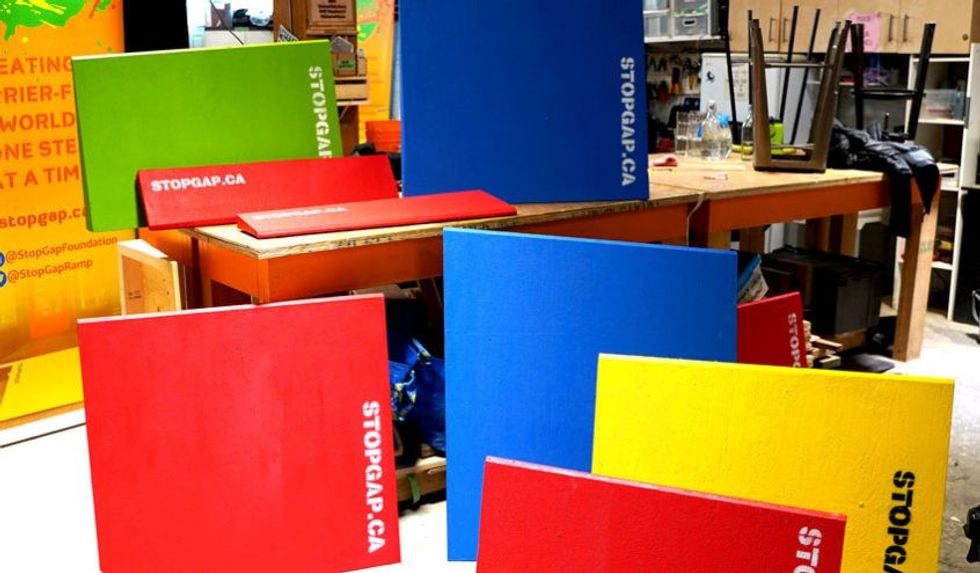
“There are other ways a unit can become accessible -- that’s not the only way. They’ve identified an expensive change to the process, but that doesn’t have to be the case. There are other ways a shower can be made roll-in even after the slab’s been poured and other ways accessibility can be incorporated after construction,” said Anderson.
A 2019 report from the Canadian Mortgage and Housing Corporation, examining the cost of making existing modest housing models accessible in several major Canadian cities, found that other than adapting the kitchen, (over $10,000) the cost of making a condo accessible was either under $5,000 or between $5,000 and $10,000 in the most common accessibility target areas. (Access to the dwelling, horizontal circulation, bathroom, and access to the rear balcony.) For other types of homes, (detached, semi-detached, bungalow and townhouse) the cost of accessibility was between $5,000 and $10,000 in those same areas.
Bright Spots Increasing Toronto’s Accessible Housing
In an effort to improve their accessible housing options and address accessibility requests from its past, Daniels brought in Anderson in an accessibility consultant role. In 2017, Anderson and Cohen unveiled Daniels’ Accessibility Designed Program (ADP), an initiative that makes six wheelchair accessible features, built beyond the requirements of the Ontario Building Code, standard in all accessible suites in Daniels’ buildings at no extra charge.
These features include a roll-in shower, a hand-held shower faucet, a roll-on balcony -- with a flush and smooth threshold at the swing-style door -- an automatic door button at the entrance to the suite, wider doors throughout the suite that are at least 34 inches wide and more clearance throughout the suite to make it easier to navigate the suite in a wheelchair. Grab bars and knee clearance at the bathroom vanity can be included by owner’s request. There are also other features available at an extra cost, including an accessible kitchen with a side-opening oven, a dishwasher drawer, and accessible counter heights for an additional $5,000.
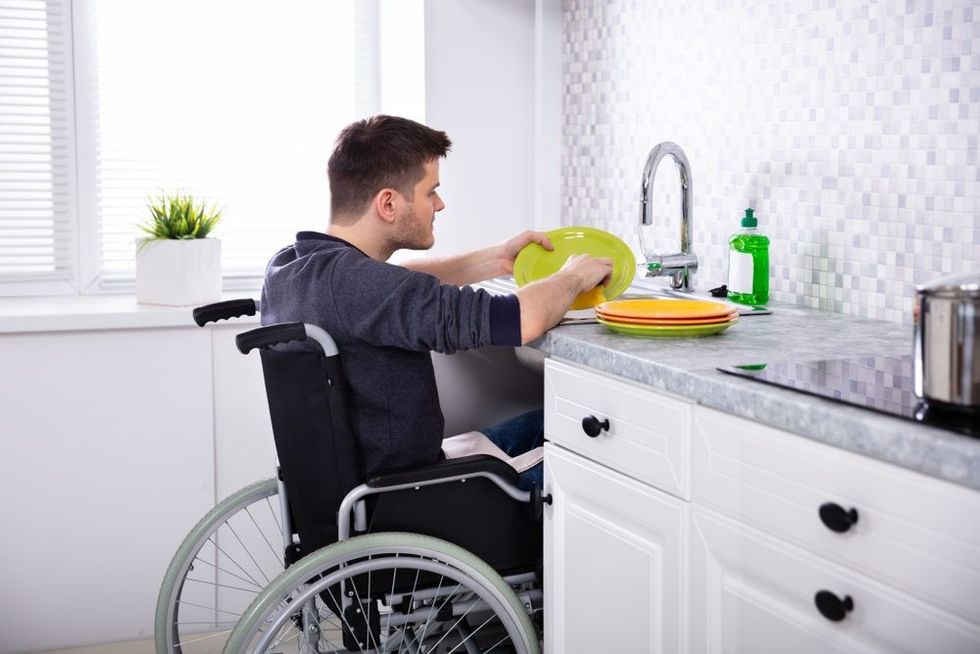
“What we found in the first two or three buildings we did this is the customization people need based on their requirements is unique. What’s more important than those six features I mentioned is if you do purchase at pre-construction or during construction, and we haven’t gotten too far along, we will help customize your space to really fit your needs,” said Cohen.
The Accessibility Designed Program is available for pre-construction purchase only. It was already made available at Wesley Tower at Daniels City Centre in Mississauga, Daniels DuEast in Regent Park, The Beverley in Thornhill, and will be a part of all future Daniels condominiums. The first three buildings where ADP certified suites were available instantly sold out and the feedback Daniels has received from residents has been extremely positive.
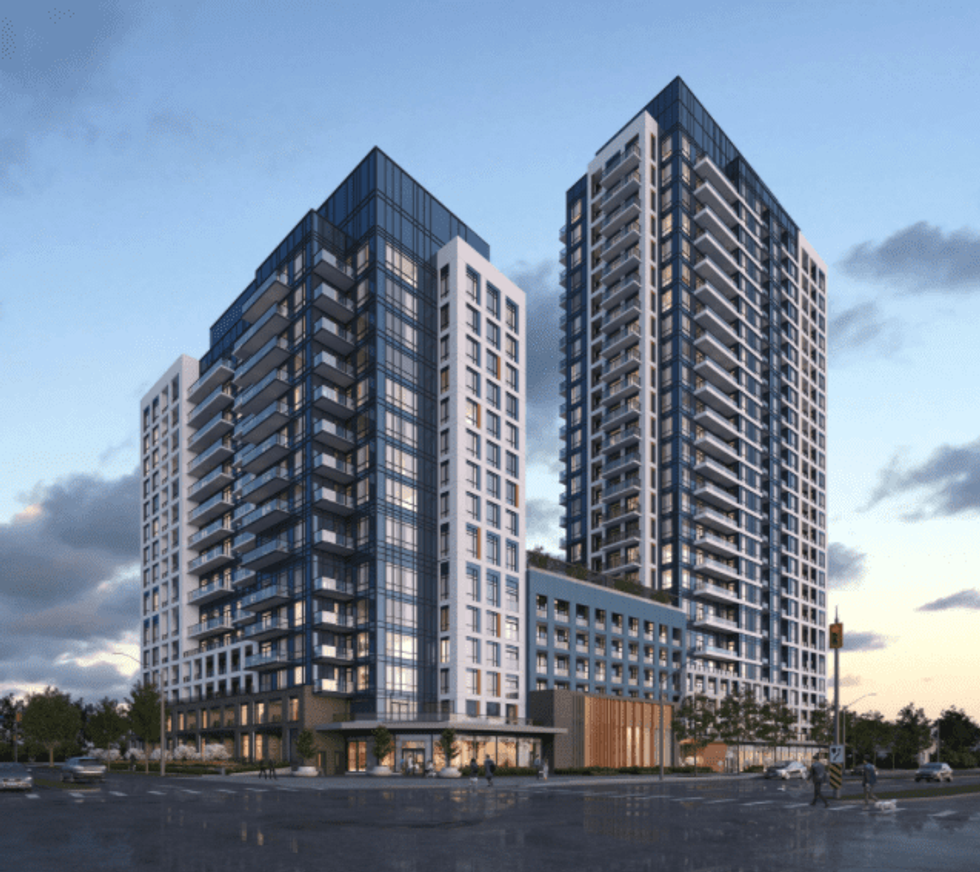
“It really told us there’s a market out there, but the key is to get it at pre-construction because [what] we learned is it doesn’t cost us any more than a typical build to implement accessibility features at that point in the process,” said Cohen.
But the number of accessible suites only covers 15 to 20% of all units in buildings where the ADP is available, a figure that’s just slightly above the 14% accessibility minimum requirement for any new residential building as mandated by the Ontario Building Code, which only requires those suites to be visitable by people with disabilities, not livable.
“We’re just trying to figure out what the market is,” reasoned Cohen. “How many people are interested in this? How many people want to try to take advantage of this is and utilize it? We’re targeting that 15 to 20% mark and we’re going to continue to go down that path,” said Cohen.
Though Daniels’ ADP initiative is a very positive step forward when it comes to increasing Toronto’s accessible housing supply, for those who’ve campaigned for 100% accessibility in housing across the city for years, this is only a start.
Above and Beyond, But Work Still Remains
Another developer who has committed to providing accessible housing is Tridel. They also approached Luke Anderson to do roll-through critiques of several of their buildings, assessing the common areas and suites for accessibility. (An example was posted online as “The Condo Challenge”.) However, they’ve applied what they learned from these experiences slightly differently than Daniels did.
“While we don’t necessarily subscribe to an overarching design principle like Universal Design, we have our own design guide that has been informed by these condo challenges and our specific intent is to extend the greatest amount of accessibility to the widest group of people,” said Danielle Feidler, Tridel’s senior vice-president of Brand Experience, which covers design services, customer communication, brand reputation, corporate social responsibility, community projects, and more.
Tridel’s commitment to accessible housing pre-dates the Accessibility for Ontarians with Disabilities Act (AODA) – the sweeping provincial legislation enacted in 2005, meant to establish a standard for accessibility in several sectors with the goal of making the province fully accessible by 2025. (Note: The AODA does not cover residential housing.)
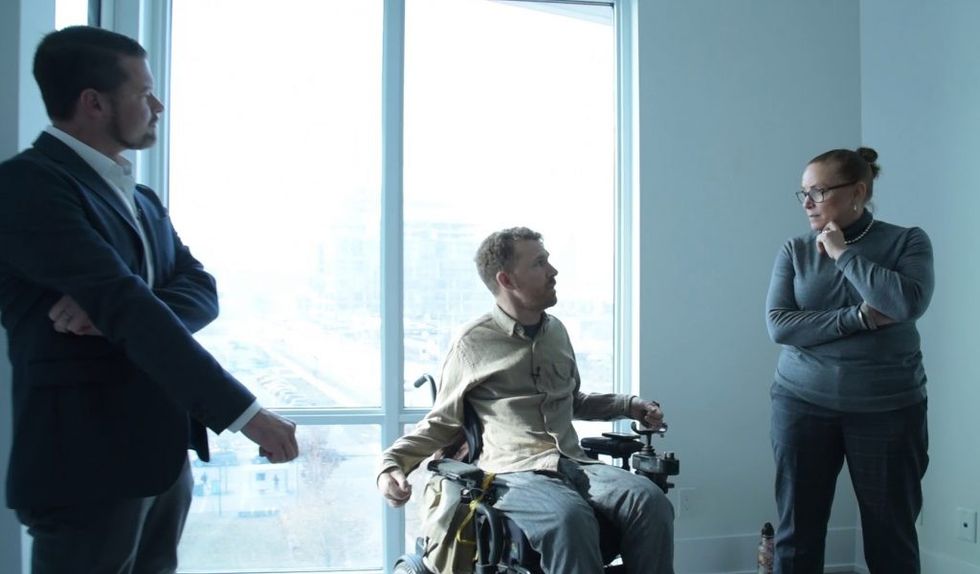
Tridel’s accessible housing offer consists of fully accessible customization according to a resident’s needs regardless of whether the suite is designated accessible according to the Ontario Building Code, so the resident is not limited in where they can live in the building or whether they buy pre-construction. But, to get this service -- which is done in concert with Tridel’s retirement living sister company Delmanor -- the resident must approach the developer with their accessibility needs at the point-of-sale.
“We looked at what Daniels was doing, we looked at some models in the states, we looked at a range of things and essentially we didn’t want to limit a person’s accessibility needs into a simple framework or put a value to it because we want to remain flexible as to the type of accessibility we can provide and the disabilities we can cater to. There is so much variety in the the types of requests we get that our program is designed to meet the majority of needs as they come in from a customized point-of-view,” said Feilder.
“Our approach is to start at the point-of-sale, have that needs conversation, and then as you get into design; we offer a range of things that I think are always price competitive.”
By that, Feidler means Tridel will work with each individual customer to try and make their accessibility upgrades affordable, including working within any funding source they may come in with, whether that’s the government, an insurance company, a settlement, or something else entirely.
While Tridel’s efforts towards accessibility should be applauded, there is some question as to whether the onus should always be on the customer to approach the developer with their needs before accessible solutions can be established and whether Tridel residents or the public are even aware that conversation can be had when necessary.
Any current or prospective Tridel condominium resident with accessibility needs can approach Tridel’s accessibility officer at this link, but a wider public marketing campaign highlighting this fact deosn’t seem to exist.
“It goes to show you that there’s a lot more work to do, even if there are two organizations like Daniels and Tridel that are, both in their own ways, interested in going above and beyond,” said Anderson.
“I’ve had some great experiences working with both developers -- there have been several moments of breakthrough in both cases -- but there have been disappointments too."
When it comes to accessible housing, the biggest disappointment that remains is simply the lack of messaging and opportunity around it. The more people who know about it and can participate in it, the more it will help and encourage developers like Daniels and Tridel to continue to implement these options.
